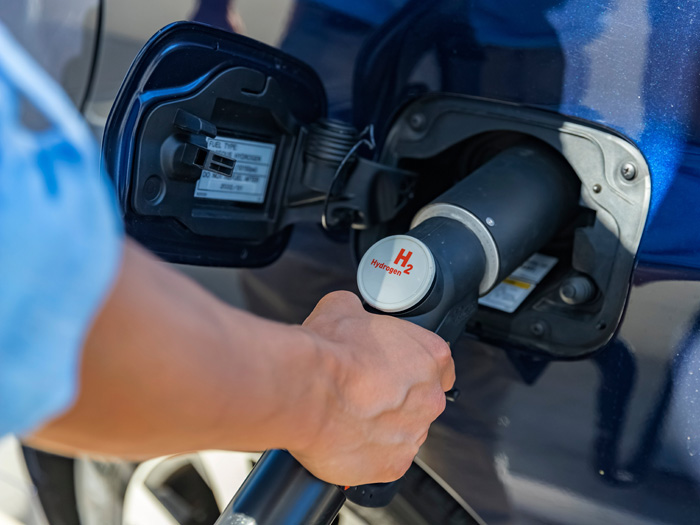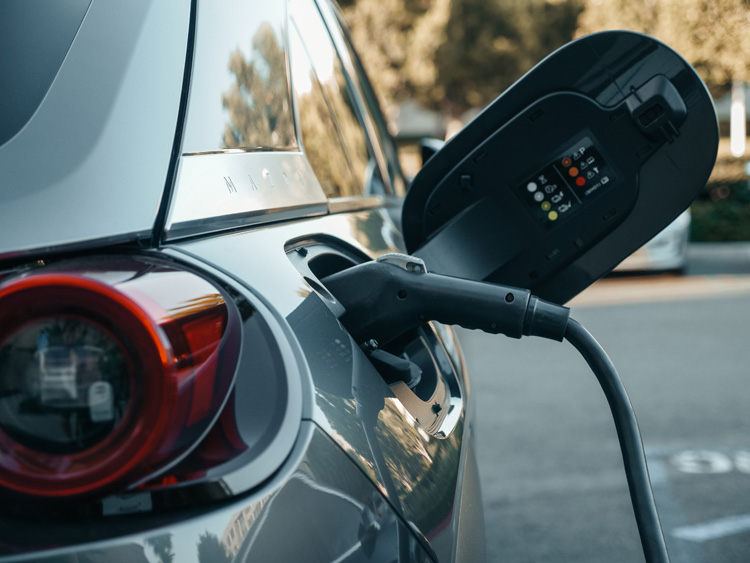THE HYDROGEN FUTURE OF EUROPE’S AUTOMOTIVE MARKET

April 2021 saw the latest collaboration in support of fuel cell electric vehicle (FCEV) uptake, with automotive manufacturer Nikola announcing plans to create a hydrogen pipeline and refuelling system across Europe. What technology is required to make hydrogen a viable option both in terms of sustainability and automotive efficiency?
Europe has one of the world’s most developed hydrogen markets and is home to over half of all projects, according to The Hydrogen Council and McKinsey’s Hydrogen Insights Reports 2021. Both the UK and the EU have plans to develop their hydrogen offering and have committed to reach a production capacity of five gigawatts (GW) and 40 GW respectively by 2030.
Despite the maturity of the sector, Europe’s hydrogen still needs considerable development in order to reach net zero targets and to become a viable fuel source for automotive applications. Making usable, renewable hydrogen is no easy feat — so where’s the best starting point?
CLEAN IS GREEN
First, we must consider how we make hydrogen green. Hydrogen can be produced in many ways, each corresponding to a different colour. Most hydrogen produced in Europe is currently grey — it is produced by mixing natural gas and steam to create hydrogen and carbon dioxide in a process known as steam methane reformation.
The problem with this production method is that it relies on a fossil fuel to produce hydrogen, which conflicts with hydrogen’s alleged sustainability superiority over petrol and diesel-powered vehicles.
Ideally, we need to make green hydrogen, which uses renewable electricity to separate the hydrogen and oxygen atoms that make up water in a process called electrolysis. This results in zero carbon emissions.
Geographically, Europe is in an advantageous position thanks to an abundance of renewable energy sources in the surrounding area. The EU’s Hydrogen Strategy Report has already identified North Africa as a priority region for increasing hydrogen availability across Europe, thanks to a plentiful supply of sunlight and subsequent renewable energy.
IMPROVING FUEL EFFICIENCY
Next on the agenda is making hydrogen-powered vehicles commercially viable. According to Hydrogen Mobility Europe, if hydrogen remains at the current low levels of demand, the cost of producing and supplying hydrogen could be passed onto end users. This would mean that hydrogen vehicles would cost more to run than both battery electric vehicles (BEVs) and fossil-fuelled cars. Therefore, any technology that can drive down cost is crucial to increasing uptake.
Fuel cell electric vehicles constantly convert hydrogen into electricity, which in turn charges the vehicle’s battery. In a process known as regenerative braking, most excess energy can be retained to help power the vehicle. However, if the battery is already fully charged or there is a failure in the system, there must be a mechanism in place to dissipate this energy surplus.
A dynamic braking resistor (DBR) is one of the most efficient ways to safely dissipate excess energy and ensure the system remains operational. Cressall’s EV2 DBR is a water-cooled resistor, which allows for safe dissipation without the need for extra components, resulting in an 80 per cent weight reduction when compared to a conventional air-cooled DBR.
These weight-saving properties lighten the load of the vehicle itself, meaning that it can travel further on the same amount of energy. This is particularly advantageous for weight-sensitive freight vehicles, such as pulp and paper or iron and steel transport. What’s more, the weight of a BEV’s battery or the additional components of an air-cooled DBR would reduce the potential load of the vehicle more than a FCEV would, which makes the EV2 and hydrogen a perfect combination for freight transport.
Nikola’s European hydrogen pipeline and fuel system is a landmark step in facilitating widespread uptake of FCEVs. However, if FCEVs are to overtake BEVs, then the refuelling system has to be accompanied by further developments in vehicle efficiency and hydrogen production to make the resource a completely sustainable, feasible option.

